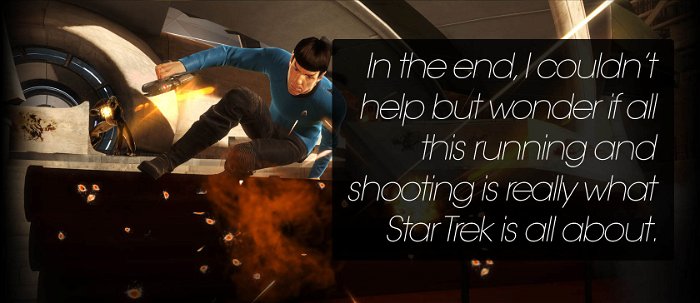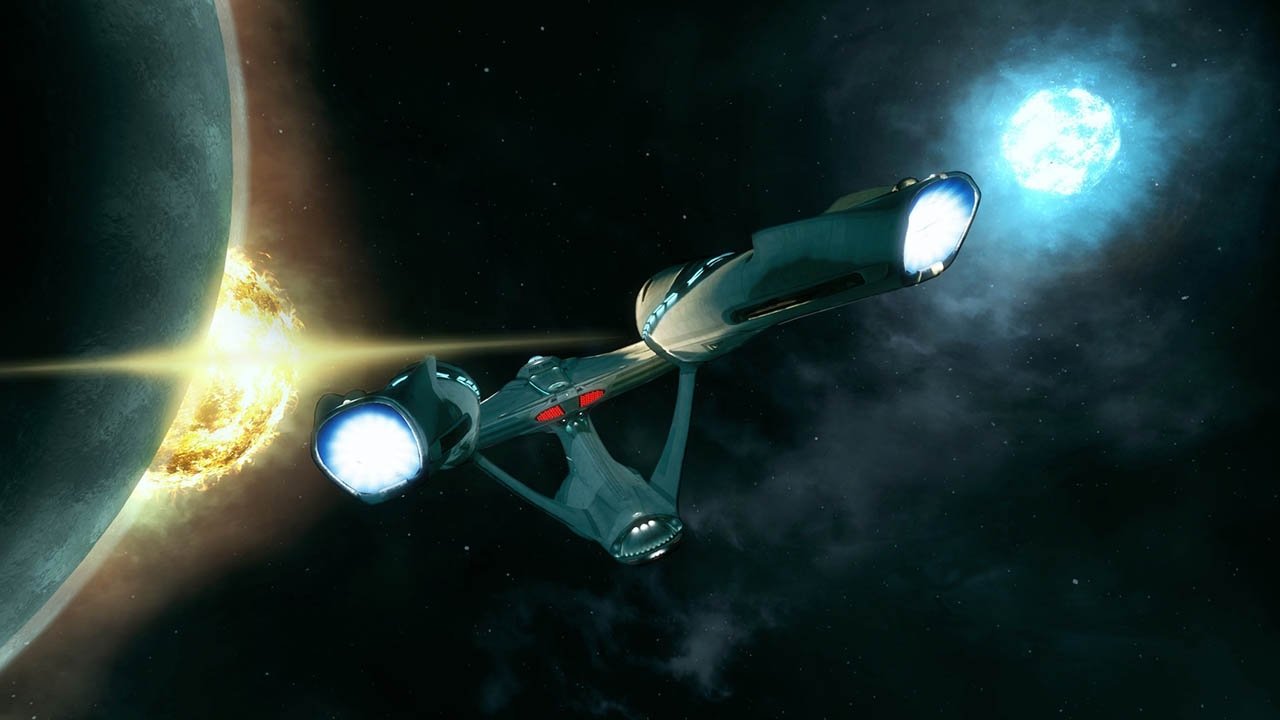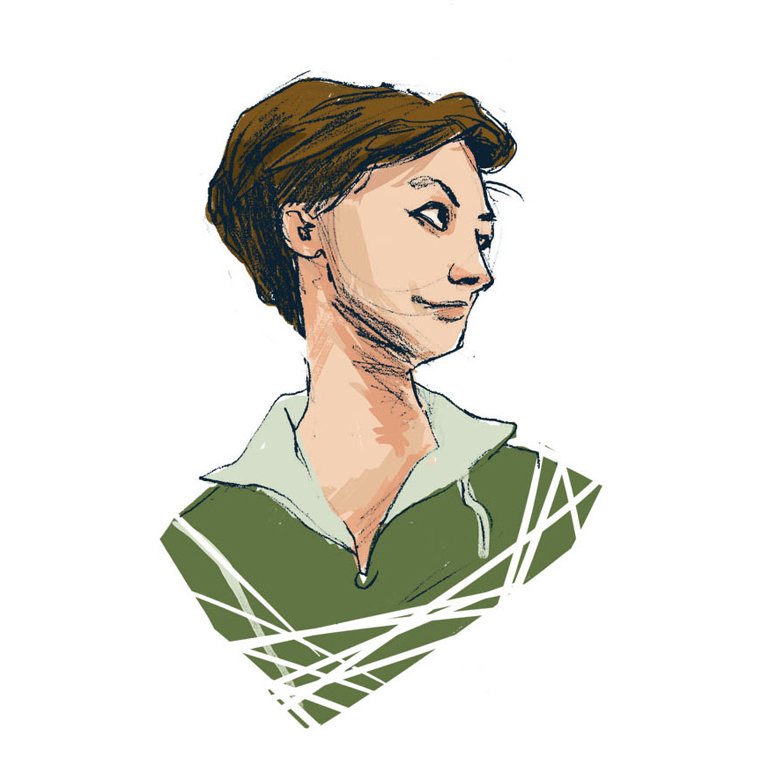In Star Trek: The Game there is a genuine attempt to harness the unique narrative powers of video games. A touching bromance is played out as remote two-player co-op, with one player taking on the role of Kirk and the other as Spock.
Each role has a unique play style and a different set of things to do that are in keeping with the character. Players not only complete puzzles together and cover each other in battle, but also heal each other with hypospray. Kirk is trapped under some debris and has to shoot enemies while Spock completes a mini-game to get him free. Spock has to carry Kirk to the med bay while Kirk continues shooting enemies. Spock has to heal Kirk’s leg while he shoots enemies.
 Essentially, this game is an on-rails arcade shooter with supplementary mini-games. One player is whack-a-moling down the bad guys while the other completes a variety of puzzles. It’s a clear attempt to combine the intellectual prowess lauded by Star Trek’s TV franchises with the cowboys-and-indians action adventures of the movies. Our PR representative acknowledged that ‘Star Trek has never been about just shooting the bad guys,’ and indeed this game does compel the players to do other things besides butt-kicking for justice. But I felt like Paramount weren’t brave enough to give players genuine choice about whether to fight with brains or brawn. Instead, the co-op gameplay was used as a way to distribute labour between players; Kirk does the physical work and Spock does the mental work.
Essentially, this game is an on-rails arcade shooter with supplementary mini-games. One player is whack-a-moling down the bad guys while the other completes a variety of puzzles. It’s a clear attempt to combine the intellectual prowess lauded by Star Trek’s TV franchises with the cowboys-and-indians action adventures of the movies. Our PR representative acknowledged that ‘Star Trek has never been about just shooting the bad guys,’ and indeed this game does compel the players to do other things besides butt-kicking for justice. But I felt like Paramount weren’t brave enough to give players genuine choice about whether to fight with brains or brawn. Instead, the co-op gameplay was used as a way to distribute labour between players; Kirk does the physical work and Spock does the mental work.
The co-op experience really is endearing at times, though I’m not sure it was always in the way Paramount intended. The bromance at work here is supposed to be a professional partnership, a marriage of complementary skills: I as Spock was ‘hacking’ interfaces with my tricorder while Kirk ran around shooting bits of the spaceship to pieces. But sometimes Kirk and Spock become unexpectedly intimate. At the end of each area, we had to work together to pull apart the doors. ‘Come here,’ said Kirk flirtatiously. ‘I need your Vulcan strength to help me.’ I love on-screen double-acts with homoerotic undertones, and this game definitely ticked that box for me as Kirk and Spock’s bodies affectionately spoon in a barely-open doorway.
But like any marriage, most of your time is spent not on intimate cuddling in doorways but on mundane chores. I spent a lot of time just hanging around while the other player finished a fiddly little mini-game. If Kirk is completing a mini-game, Spock can’t even see it on his own screen, so he can’t offer help or even see what’s taking so long. All he can do is run around a bit and look for narrative details. I don’t feel like this going to be fun to play remotely with a friend on the other side of the world. I was demo-ing the game in the same room as my co-op partner, and I can’t even remember that guy’s name.
Throughout the demo, I felt aware that this is an on-screen event that is being played out before me by Paramount. I’m not driving the action in this game, I’m just jumping through hoops and performing tasks that have been set for me. I don’t feel clever for having completed a level; I only feel like I have done the bare minimum to pass the test. It is less a game and more a digital museum exhibition, with lots of little details that give you a reason to stop and linger awhile if you’re so inclined.
A more minimalist approach to storytelling is probably unreasonable to expect from a project so protectively fathered by a movie distributor, but it would have helped me to feel like I was experiencing Spock’s life for myself, rather than just being told what to do by my corporate overlords. Despite the little puzzles that make this more than a shoot-em-up, I couldn’t fight back a wave of ennui.

What’s the point of it all?
In the end, I couldn’t help but wonder if all this running and shooting is really what Star Trek is all about. When I was growing up, Star Trek was about making sense of the world, solving technical problems in order to overcome evil, and confronting the evil that sits inside your own institutions. It was also about forming friendships through adversity that would last forever.
In this game, all that stuff is narrated to you, rather than being experienced by you. Problems are solved in the cut-scenes, leaving you to just do the grunt work of putting those solutions into action by shooting things. The world doesn’t make much sense because it’s too busy exploding everywhere. How can I confront internal evils if I’m just doing what I’m told all the time? And if I didn’t feel that the game allowed me to bond with a co-op partner who was sat right next to me playing on another machine, how on earth could it build friendships with people to whom I’m only connected by ethernet cable?
Star Trek: The Game will be released on April 23rd.




